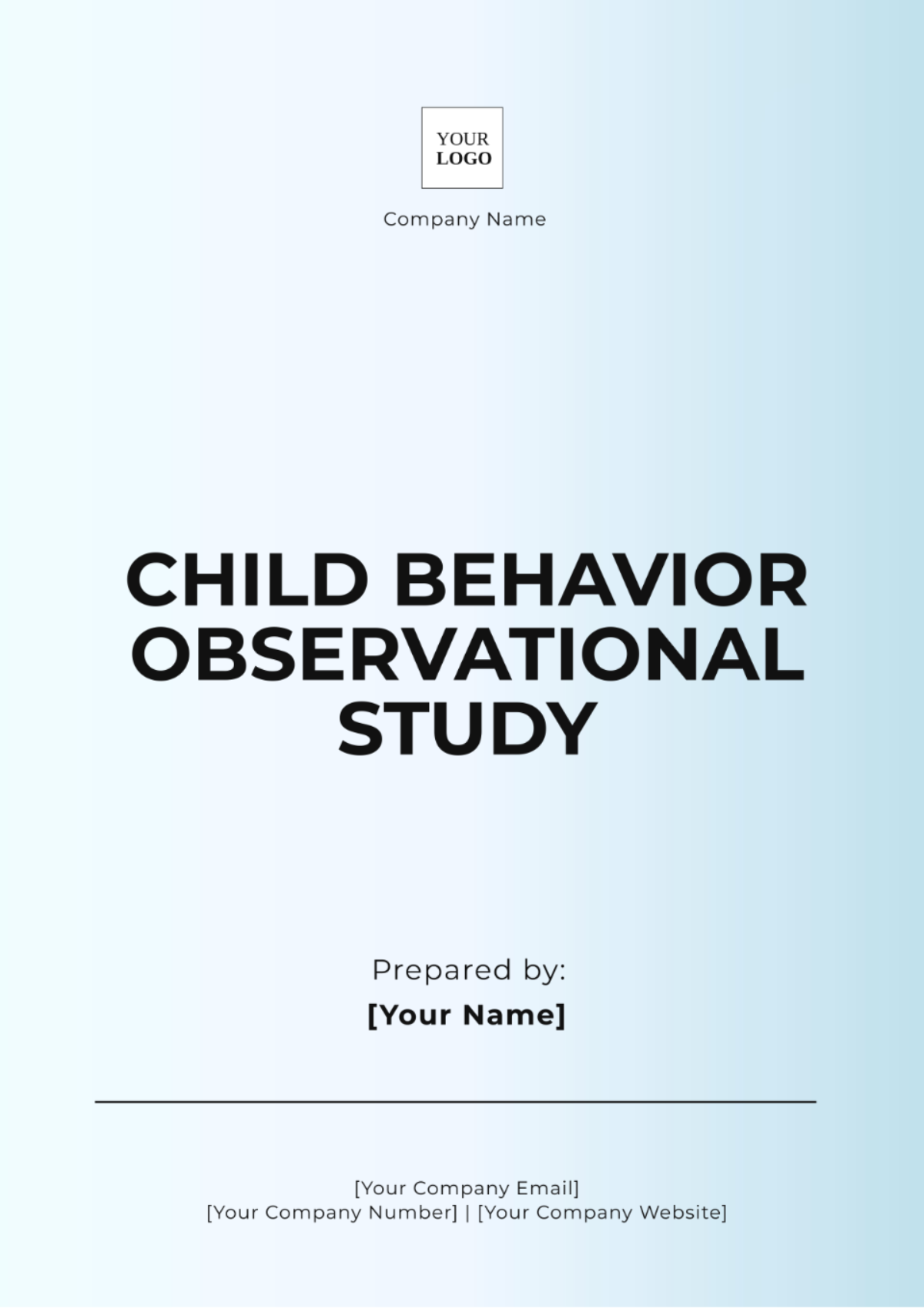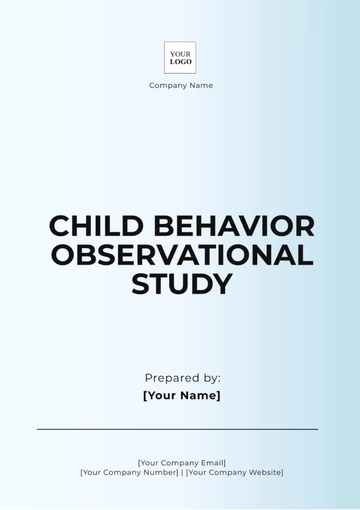Child Behavior Observational Study
Prepared by: [YOUR NAME]
Date: [DATE]
I. Introduction
A. Purpose of the Study
This study aims to observe and analyze child behavior in a playground setting to understand the patterns and determinants of various behavioral expressions. By examining how children interact and respond to stimuli in a real-world environment, the study seeks to enhance theories in educational psychology, advance child development knowledge, and guide effective behavioral interventions.
B. Research Questions
What are the predominant behaviors exhibited by children in a playground setting?
How do these behaviors vary across different age groups and between genders?
What role do environmental factors play in shaping these behaviors?
C. Significance of the Study
II. Literature Review
Previous research on child behavior has explored various environments, including homes, schools, and public spaces. Foundational theories by Piaget and Vygotsky have shaped our understanding of child development. More recent studies highlight the impact of social interactions and environmental stimuli on child behavior (Smith, 2050; Jones, 2051). Gender differences in behavior have also been noted, with boys often exhibiting more physical behaviors and girls showing more social behaviors (Brown, 2052).
III. Methodology
Data Collection Methods: A structured checklist was used to record specified behaviors such as play, social interactions, negotiation, and physical actions, providing a clear and accurate depiction of the children’s activities.
IV. Results
Behavior | Frequency (Ages 3-5) | Frequency (Ages 6-10) |
|---|
Physical Play | 25% | 30% |
Social Interaction | 40% | 35% |
Conflict | 10% | 15% |
Negotiation | 25% | 20% |
Statistical analysis shows a significant difference in the frequency of physical play between younger and older children (p<0.05).
V. Discussion
The results of the study uncover multiple significant patterns in the behavior of children, each of which provides valuable insights into their development and actions in various contexts.
Minimal Differences in Social Interaction Across Ages: Social interactions showed only minor variations between different age groups. This consistency might be attributed to the developmental phase where older children are more involved in structured, rule-based play rather than spontaneous social interactions.
These findings align with previous research (Smith, 2050) and provide valuable insights into how environmental factors influence child behavior. The results highlight that while physical play evolves with age, social interactions remain relatively stable, and conflicts increase as children assert their independence.
VI. Conclusion
A. Key Findings
Age-Related Differences: The study highlights notable differences in child behavior based on age, particularly in areas of physical play and conflict resolution. Older children engage more in physical activities and show an increased frequency of conflicts, reflecting their developmental stage and growing independence.
B. Recommendations for Future Research
These recommendations aim to expand on the current findings and enhance the understanding of factors influencing child behavior, contributing to more targeted and effective interventions.
VII. References
Brown, R. (2052). Gender Differences in Playground Behavior. Journal of Child Psychology, 45(3), 234-250.
Jones, L. (2051). Impact of Environmental Stimuli on Child Development. Developmental Review, 50(2), 120-135.
Smith, A. (2050). Social Interactions and Child Behavior. Child Development Perspectives, 40(1), 78-85.
Observational Study Templates @ Template.net






























